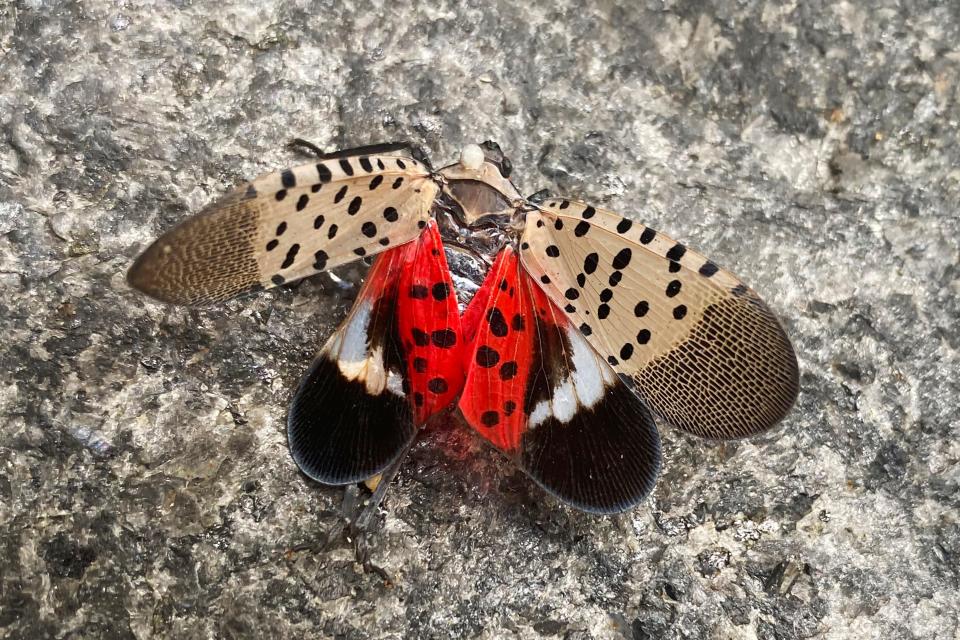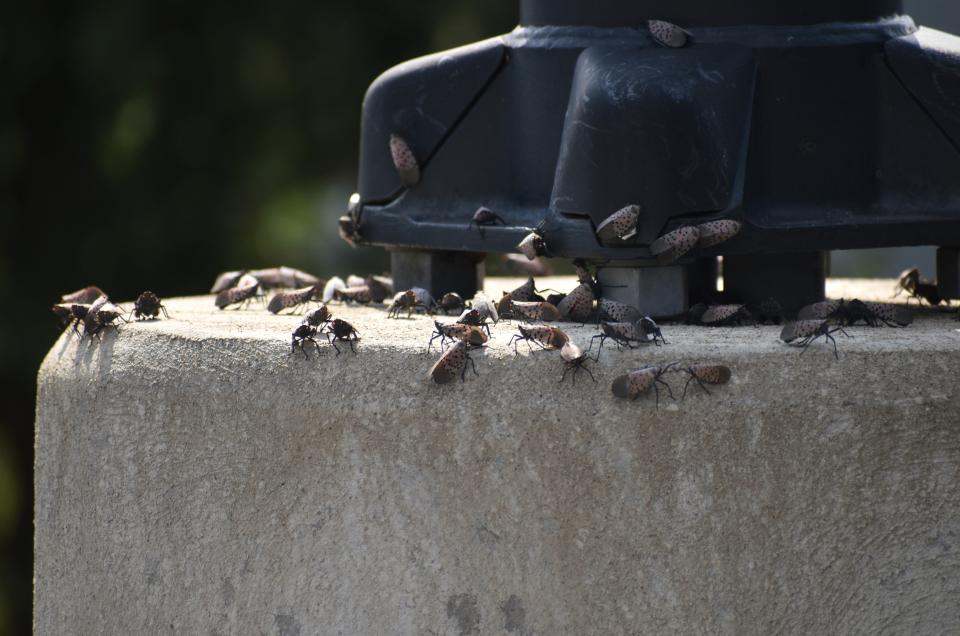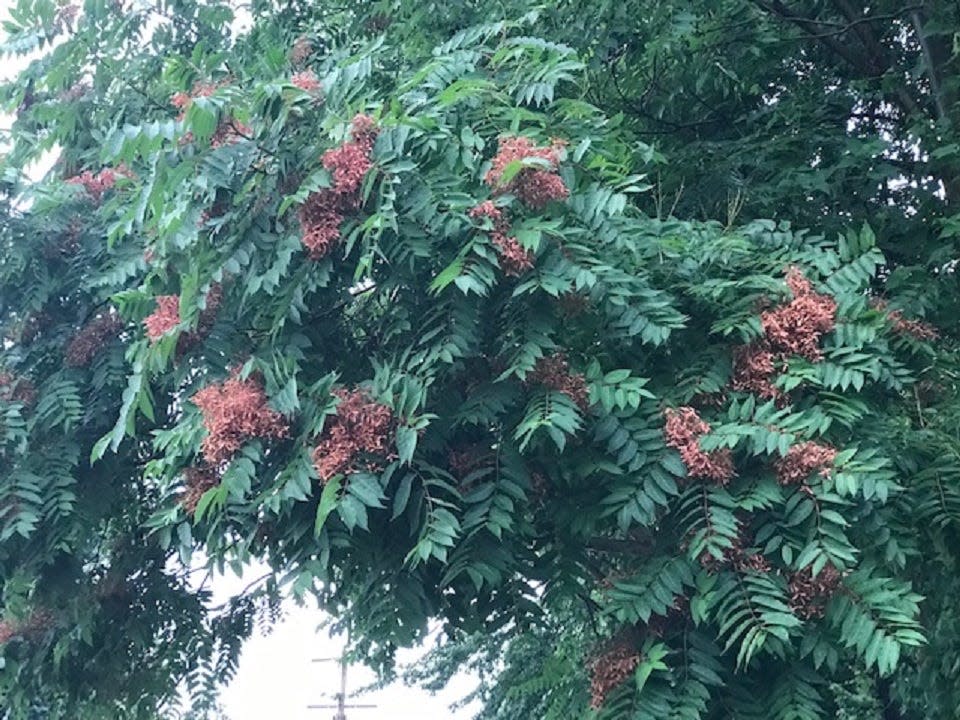'See it. Squish it. Report it.': Michigan residents urged to squash spotted lanternfly
LANSING — Michigan experts are encouraging the public to squash the invasive spotted lanternfly as the destructive insect rapidly spreads throughout the Great Lakes region.
The state’s invasive species program has launched a “See it. Squish it. Report it.” campaign advocating not only killing the pest, but also reporting the deed. They are doing it with public-service videos, social media and billboards along freeways to battle a pest that has already taken over the East Coast.
“Ultimately, the insect will spread. But the goal is containment,” said Michael Philip, the director of the Michigan Department of Agriculture and Rural Development’s Pesticide and Plant Pest Management Division.

The insect targets more than 70 kinds of plants, including fruit and hardwood trees, according to the U.S. Department of Agriculture. It’s particularly fond of fruit orchards, hardwoods and grapevines.
The insect doesn’t eat fruit, but does eat sap in the wood and stems of trees and plants.
Spotted lanternflies first made their way from Asia into the U.S. in Pennsylvania. They have since spread through the Great Lakes region and are now in New York, Ohio, Indiana and Illinois.
The spread has been quick and difficult to control, as the pests’ presence has been confirmed by state agencies in 15 states since 2014.
The “See it. Squish it. Report it.” campaign was launched one year after the only detection of the pest in Michigan, in Pontiac, in August 2022.
The population was confirmed to be isolated to a single tree/area in Oakland County and since disposed of by the Michigan Department of Natural Resources.
According to the campaign, spotted lanternfly egg sacs look like gray, palm-sized clumps of chewed bubblegum and can be found on hard, outdoor surfaces. The adult is a brown bug with bright red, polka-dotted wings beneath its brown outer shell.

According to the U.S. Department of Agriculture, spotted lanternflies can fly — but it’s not their strong suit. They prefer to jump for short distances and hitchhike otherwise.
They cross state lines by laying their eggs on train cars and other vehicles with hard surfaces.
Damage to plants arises from the way the adult spotted lanternflies feed – they target the sap of the host plant and excrete a byproduct called honeydew, according to the Michigan Invasive Species Program. The honeydew attracts other insects such as yellow jackets, flies and ants.
It’s also a colonizer for a fungus called sooty mold that grows on honeydew. The fungus can foul surfaces and kill plants in extreme cases, according to state agriculture officials.
“It’ll turn your car black, or your house,” Philip said. “It’ll get so bad in some cases that the leaves get so covered in sooty mold that they can’t photosynthesize properly anymore, and they can get sick or even die.”
While they can be found on any plant, lanternflies strongly prefer the tree of heaven, an invasive species also originating from Asia. That makes tracking and control of the insect slightly easier because infested trees can be treated or removed.

“First, we’re going to look for their preferred host, the tree of heaven, because it is so very attractive to the spotted lanternfly,” Philip said. “If there’s a lanternfly infestation, and there’s a tree of heaven there, it will almost definitely be on that tree.”
Wildlife and pest agencies in the Great Lakes region have ramped up control efforts. Wisconsin and Minnesota are the only states in the Great Lakes region without a confirmed presence.
Shealyn Paulis reports for Great Lakes Echo.
This article originally appeared on The Daily Telegram: Michigan residents urged to squish spotted lanternfly

